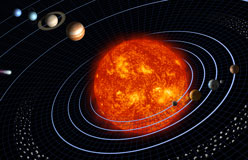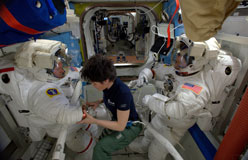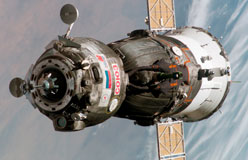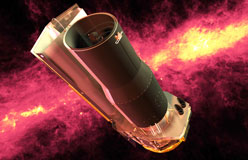Have you ever done this? You blow up a balloon, but instead of tying a knot in the end to hold in the air, you let go—and immediately, air rushes out. The balloon swerves, circles, zigzags, and keeps flying as long as the air is still rushing out. When the air stops flowing, the balloon drops to the ground.
The balloon demonstrates a phenomenon first described by British scientist Sir Isaac Newton (1643–1727). The idea is that for every action there is an equal and opposite reaction. In the case of the balloon, here’s how that works. The action is the air rushing out, moving with a specific amount of force in a specific direction. The equal and opposite reaction is the balloon flying around, with the same amount of force but in the opposite direction.
Scientists use this same phenomenon to launch a rocket, and here’s how it works.












